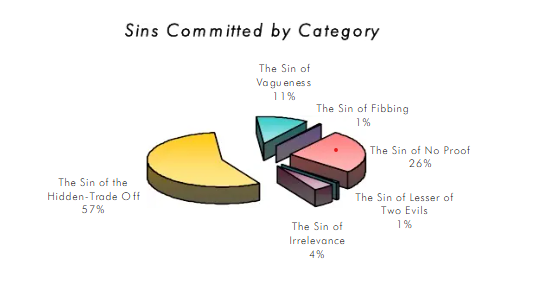
Greenwashing: What it is and How to Prevent it
Greenwashing is a marketing strategy that organizations use to present themselves as environmentally friendly and socially responsible to the consumers, without making any efforts in that direction.
Greenwashing can be at the product level – where a product is marketed as green, natural, or eco-friendly without sufficient proof. Or this tactic can be used at the firm level, where an environmentally responsible image of the organization is shaped through campaigns.
The term was first used by American environmentalist Jay Westerveld, in 1986. In his essay, he highlighted the unethical practices of hotels in Fiji that asked their guests to reuse towels to save the environment. However, apart from helping the hotels save money on laundry, the movement has almost no environmental impact.
Since then, the phrase greenwashing has been used to call out the false and misleading claims of sustainability, used by companies to create a ‘greener’ image, when the reality is different.
A prime example of the same is the use of nature imagery on plastic water bottles. No promises of ‘made with 30% less plastic’ can take away the fact that most of these bottles and caps are going to end up in landfills and oceans.
Another example is the sustainability tag employed by multiple brands in the fashion industry while using fuel-based synthetic fibres and environmentally damaging manufacturing processes.
According to a report by Changing Market Foundation, nearly 60% of the green claims made by European fashion brands are misleading. Major retailers are regularly accused of misleading their customers through unsubstantiated green claims.
Green claims can mislead in multiple ways. A report by Terra Choice lists the ‘Six Sins of Greenwashing’. The organization examined 1,018 products in North American consumer markets that made environmental claims and found that all but one was guilty of committing at least one of the ‘sins’.

Source: Terra Choice
Why Use Greenwashing?
As people become increasingly aware of the rising environmental issues, they are gravitating towards eco-friendly products and services. In fact, Internet searches for ‘sustainable goods’ have increased by 71% from 2016 to 2021, according to a report commissioned by WWF.
In fact, 64% of Gen X consumers and 75% of millennials are ready to pay more for a product from a ‘sustainable’ brand says another report.
In India, as per the Sustainable Consumption in India 2021 Report, online shoppers prioritize three factors while making their purchase: quality, environment, and health. Brands’ non-sustainable policies are met with active boycotting in certain scenarios. Moreover, other stakeholders such as investors, government, and corporate customers now favour companies with a better environmental performance.
This changing landscape where sustainable behaviour is rewarded, while non-sustainable policies are met with negative consequences, has created pressure on companies to improve their ESG (Environment Social Governance) Portfolio. However, many business entities use this scenario as an opportunity to develop greener strategies to manufacture a reputation, of being environmentally conscious.
The Confusing Effects
For many consumers, sustainability has become a buzzword, that is used to sell unreliable products. There are too many ‘natural’ and ‘eco-friendly’ products in the market now. It’s hard to differentiate between the real and the fake claims.
Through greenwashing, companies have introduced scepticism and confusion in the minds of the general public. Trust for a brand’s sustainability tags has become sparse.
Further, the marketing tactic is shifting the focus from the real environmental threat we are facing. It is also hurting those companies that are genuinely trying to be green. As a tactic to gain market share, greenwashing might work by fooling consumers. But in the long run, selling services with misleading advertising is bound to damage the reputations and hurt the sales of an organization.
Greenwashing Can be Prevented
Transparency in messaging is vital. Rather than using vague terms such as natural, organic, or eco-friendly, that cannot be backed by proof, companies should make simple and easy-to-understand claims that can be substantiated by genuine numbers.
The imagery used on packaging and websites must be conscious of the perception that is being created.
Finally, if an organization wants to build a green reputation within the industry, it must ensure that sustainability is actually part of its business model. Many businesses have the misconception that this ethical and responsible approach can hamper business growth.
Perhaps, the idea of switching to renewable energy for example is daunting due to the expense involved. However, in the long run- renewable energy can help an organization save big on energy expenses and provide a buffer against rising prices of power. Plus, a step in this ‘green’ direction, can also aid in reducing carbon emissions. Other basic actions such as introducing recycling in daily operations and monitoring everyday consumption can provide surprisingly big financial returns in the future.
Apart from these steps, companies can also invest in green programs developed by a third-party organization, such as Clean Hedge, to offset their carbon emissions.